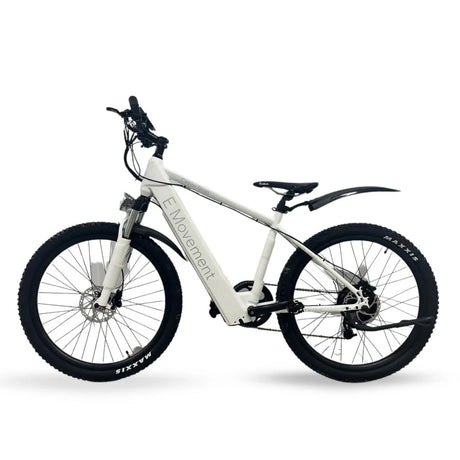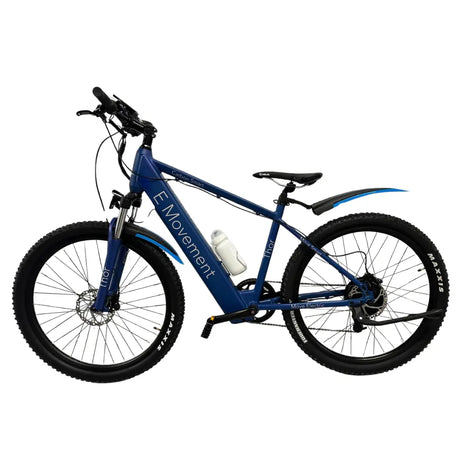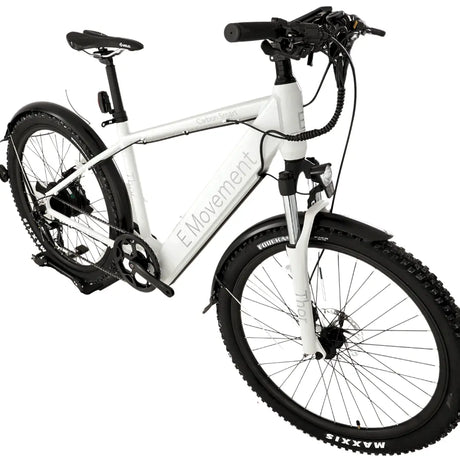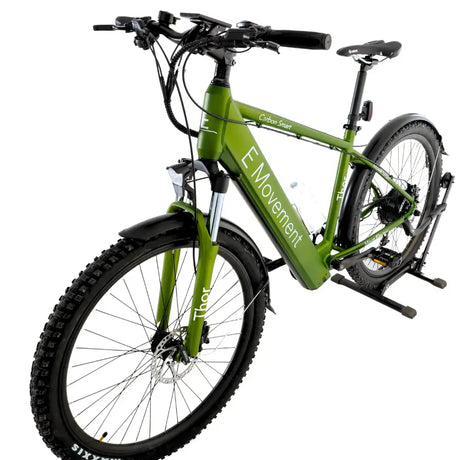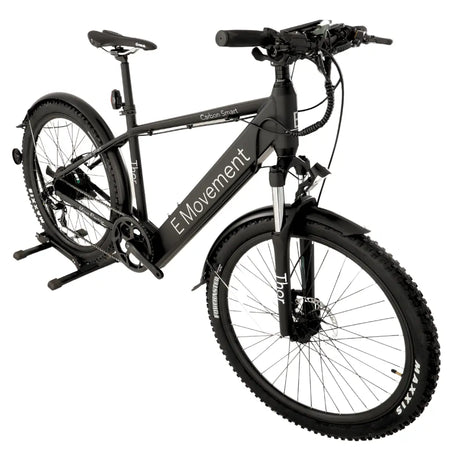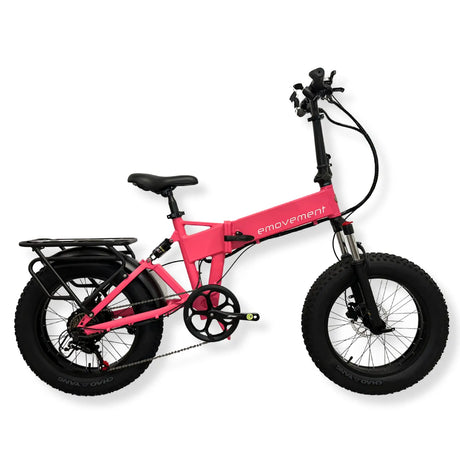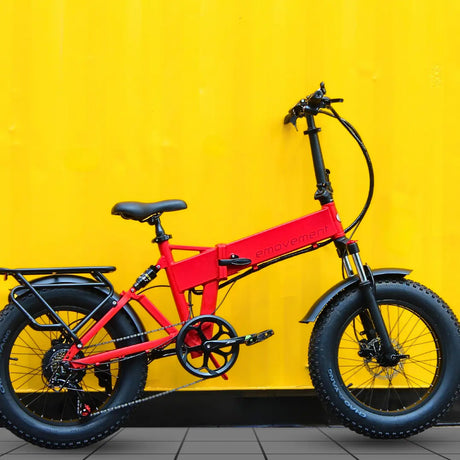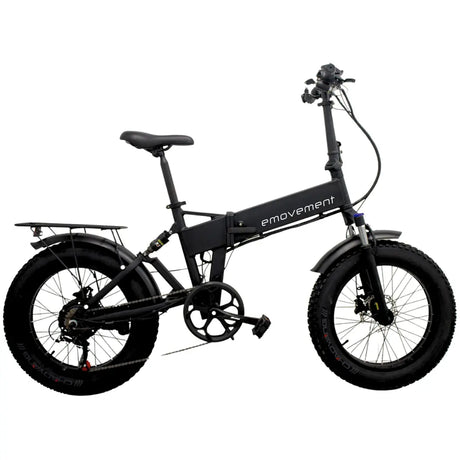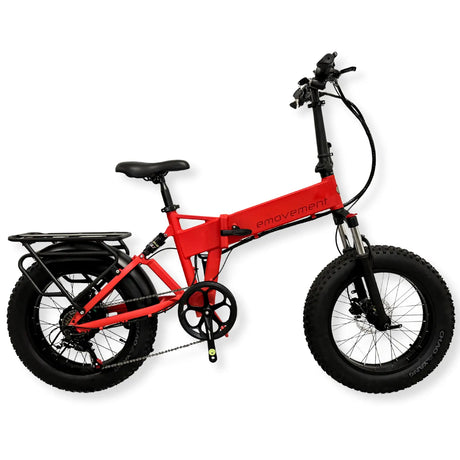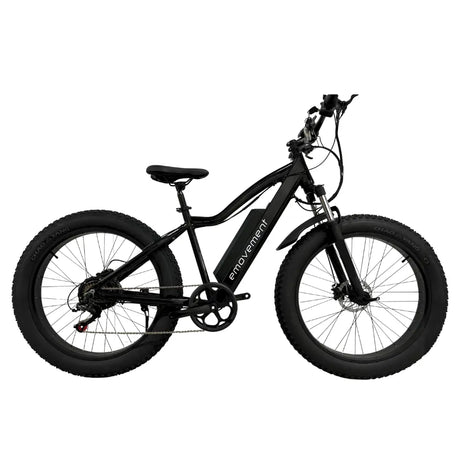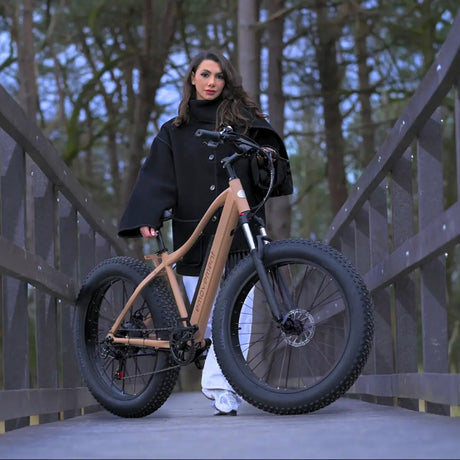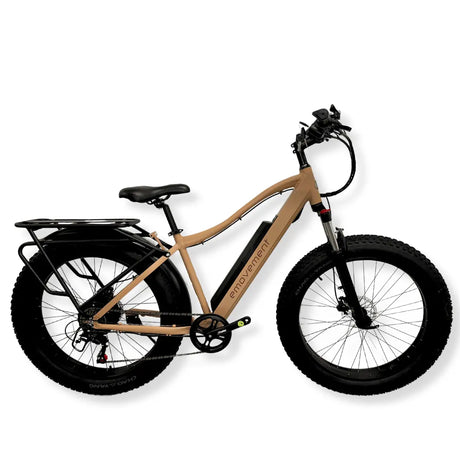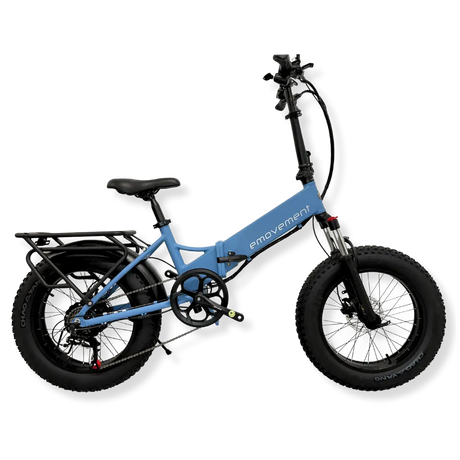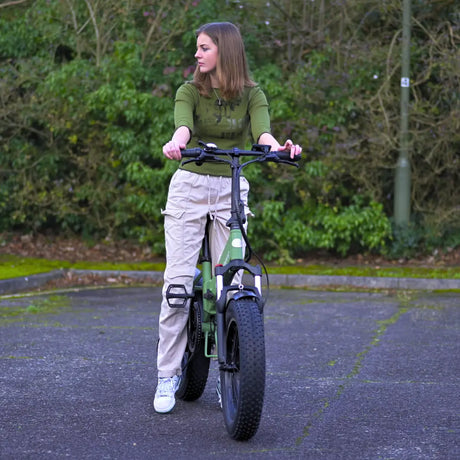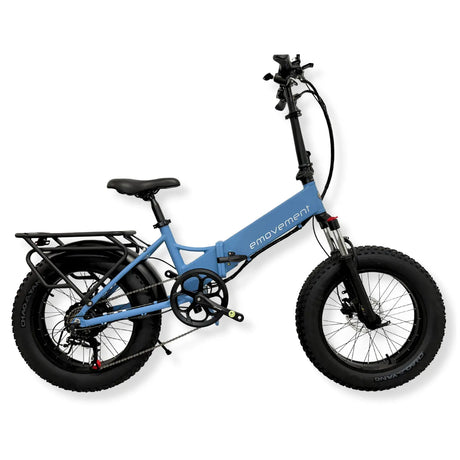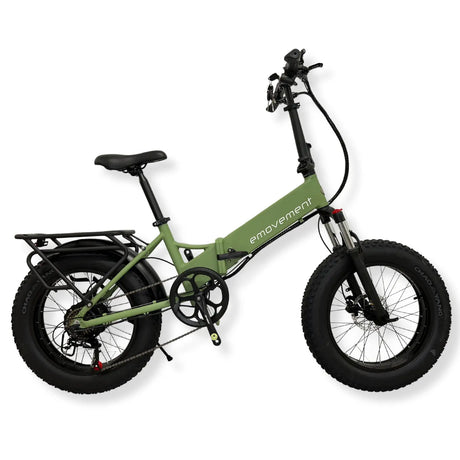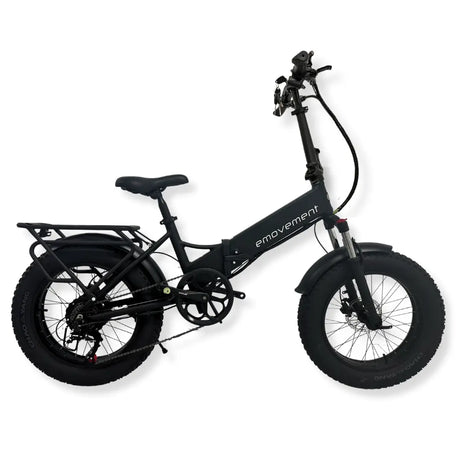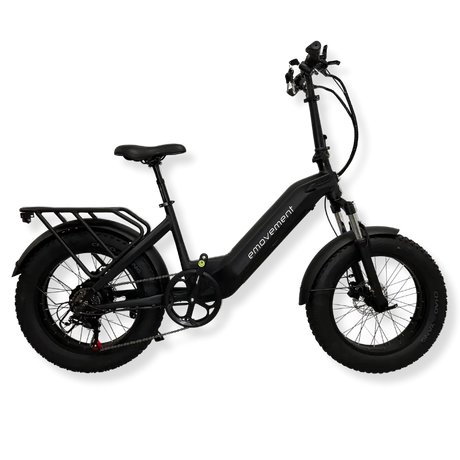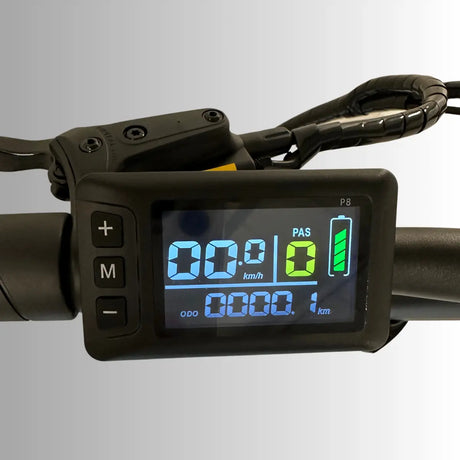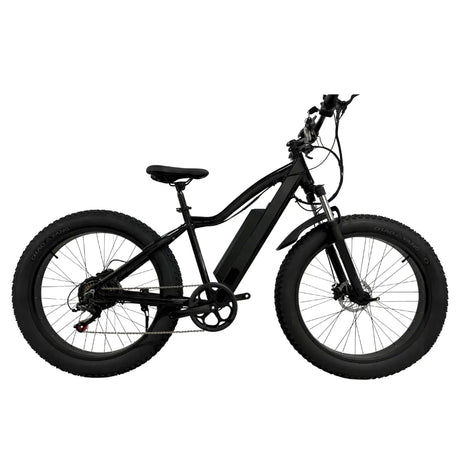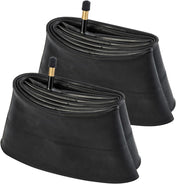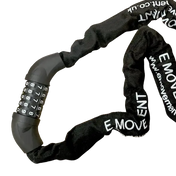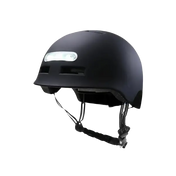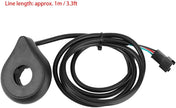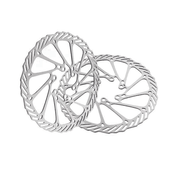Nowadays, everything is attached to a motor, and bicycles are no exception to this rule. It’s no surprise then that electric bikes have been making headlines as the go-to for daily micro-mobility solutions . Combining the charm of the timeless two-wheel pedalling vehicle with increased convenience and ease has resulted in electric road bikes, or electric bicycles, being the logical choice for commuting, recreational, and adventure cyclists alike.
Not only do e-bikes possess all the benefits of a convention cycle, but they also include additional features in line with present-day trends and requirements. Electric bicycles are the way to go whether you wish to exercise or contribute to protecting the environment. The best part? They’re much lighter on the pocket than gas-guzzling cars.
Keep reading as we delve into how electric bikes work, their functionality and various components, and much more in detail.
Please note that the terms electric bikes and electric bicycles are interchangeable.
An Electric Bike vs. A Regular Bicycle
You might be wondering how one determines whether to buy an electric or conventional road bike. To answer this question, we’ve compared their various features below:
1. Differences In Riding Experience
Perhaps, the pedal assistance technology is the most noticeable difference you’ll feel in riding your electric bike compared to a conventional one. With the motor powering your pedalling, you can go faster and farther with less effort. Those steep hills that would’ve otherwise haunted you when riding a traditional bike will barely be a challenge as you zoom up on your e-bike.
If you upgrade to an electric road bike from a traditional one, you will also notice a difference in weight. Regular cycles have a lighter weight due to the lack of additional electric components , so upgrading to an e-bike may affect your bike’s portability and storage.
Since electric bikes are more sophisticated with more outstanding components, they naturally require more maintenance to provide a smooth ride without any inconvenience. Getting your electric road bike serviced by a professional occasionally is a good idea, but it may cost you more than self-maintaining a traditional road bike.
2. Speed and Distance Capabilities
With the motor and PAS technology backing you up, you can cover longer distances much faster on an e-bike than a traditional road bike. On electric road bikes, you can go up to 45 kph; however, local regulations might limit your speed to a maximum of 25 kph . In contrast, a traditional bike can speed up to 25 kph depending on your physical effort, but you’ll be sweating and straining to secure this speed.
Depending on your battery capacity, terrain, and inclines, you can go up to around 150 km before recharging your e-bike’s battery. The distance capabilities of normal bikes, once again, are limited by your physical abilities – if you are in peak athlete form, you could go up to 100 km. Still, it would require much more effort without the motor and PAS sensors aiding your riding.
3. Terrain Suitability
While conventional bikes are best suited for smooth, paved roads, an electric bike is much more versatile thanks to its electric motor. Forget about putting in all that extra effort to struggle up hills or potholed, uneven roads. You can easily climb hills and charge through rugged terrain that would make your regular cycle baulk at sight.
4. Cost Comparison
If you start pulling up price tags, you’ll see that regular bikes are cheaper . This is because they don’t include a motor, pedal-assist technology, or other components that an electric bicycle comes kitted with. Plus, maintenance and battery replacement costs will also cause a dent in your finances.
That said, an e-bike is still better than investing in a car. The fuel savings alone make them a desirable choice. You’ll be even more delighted to know you won’t have to pay taxes, insurance, parking fees, etc. when riding one.
5. Environmental Impact
Although electric bicycles are environmentally friendly compared to gas-consuming cars and buses, they can’t beat a conventional bike’s almost negligible carbon footprint. Since they have lithium batteries, the emissions during manufacture do have a negative environmental impact.
The Main Components of an Electric Bike
Electric bikes aren’t just regular bicycles with a motor and battery tacked on: they are designed and built from the ground up, keeping in mind the needs and lifestyle of the modern-day commuter. E-bikes are manufactured with cutting-edge materials, prioritising both portability and durability. It doesn’t hurt that companies are increasingly using equipment designed to ensure the most convenient and comfortable riding experience.
The main components that let electric bikes work are their frame, battery, motor, PAS sensors, display unit, brakes, and gears:
1. Frame
An e-bike’s frame is its backbone since it is usually constructed from lightweight yet highly durable materials, such as titanium, carbon fibre, steel, or aluminium. Apart from the traditional diamond design of standard bicycles, electric bike frames come in various designs, each offering its own level of accessibility, convenience, and riding experience.
From step-through frames for easy mounting and disembarking, folding frames for ultimate portability, to cruiser frames for long cycling rides with their comfortable sloping form factors, you can easily find the right electric cycle to fit your lifestyle.
2. Battery
Electric bicycles typically integrate a lithium-ion-based battery, which is lightweight and efficient. Covering a range of 30 to 60 kilometres on a single charge, an electric bike is the perfect solution for your daily commute to work, popping down to the shops, or meeting with friends for a fun evening ride. With an average charging time of just 3.5-6 hours, electric bicycles can easily keep up with your fast-paced lifestyle.
3. Motor
The electric motor is the veritable heart of the electric bicycle. It helps with pedalling and propelling you up to a breezy 25 km/h to get you where you need to be quickly and safely, boasting different power outputs, with 250W being standard in the UK due to relevant laws .
4. Pedal Assist Sensors
If the e-bike motor is the heart of the electric bicycle, then the pedal assist system’s sensors (PAS sensors) are its brain. These are designed to help you travel long distances with ease and speed. Kicking in when you start pedalling and giving you a range of customisation options, you can optimise your e-bike’s settings in no time. The PAS is the reason an e-bike is also often called a pedal-assist bike .
These sensors save battery life by only activating the motor when you need that extra push, keeping the motor from running constantly. Additionally, the PAS technology makes riding more accessible for individuals with disabilities and ensures a safer journey for everyone.
5. Display Unit
The display unit is mounted on the handlebars for the rider’s convenience and is always within sight. Display units can be high-resolution OLED displays, more simplified LCD screens , or even basic LEDs. And there’s no need to get confused between the choices because all types are compatible with your e-cycle model.
With an ergonomic layout, all vital information is available at a glance – including your current speed, distance travelled, battery charge level, and how much more distance you can cover before recharging. You can even adjust the PAS settings from the display with just a few quick taps.
6. Brakes
As fun as it is to bolt down streets and roads on your sleek electric road bike, stopping timely and safely when required is essential. Luckily, quality e-bicycles come equipped with powerful disk or hydraulic disc brakes , enabling you to ride confidently while keeping others out of harm’s way. Disc brakes work well in wet and muddy conditions, so you can keep riding when it’s not sunny out.
7. Gears
Like conventional cycles, e-bikes come with several gears that provide more control over your riding experience. Gears help you choose the right setting for the right occasion – you can pick the advanced gear settings to put in more pedalling effort (the PAS sensors will help!) and go even faster, or choose a lower gear setting for a more leisurely, less strenuous pace.
Source: Unsplash
How Does an Electric Bike Work
In this section, we’ll discuss how e-bikes work and how to use one:
1. The Pedal Assist System Technology
First, let’s consider what we’ve already mentioned above as an e-bike’s brain: the PAS technology. This brain is smart because it only kicks in when you pedal rather than pushing your electric bike forward with a constant throttle setting. The PAS mechanism conserves your bike’s charge and propels you forward while prolonging your battery life for a more predictable and safer riding experience.
The PAS technology incorporates cadence sensors to track your pedalling rhythm and speed and signals the motor to give you the assistance you require consistently. Plus, you can seamlessly customise the assistance level from the display unit on your handlebars, depending on the terrain you come across or how much energy you wish to expend.
2. Battery Usage and Charging
Since e-bikes come equipped with rechargeable lithium-ion batteries, they are more convenient than ever to recharge and utilise. Depending on the battery size, you can plug the battery into any wall port and fully charge it in just a few hours. Most electric bike batteries are rated 10Ah, but these can be swapped out for larger capacity batteries, up to 20Ah or more , to let you travel even further before recharging.
Electric Bike Voltage Explained
Electric bike voltage represents the voltage the battery supplies to power the motor. It’s measured in volts (V).
A higher voltage means more power can be delivered to the motor, which means an increase in speed and acceleration . For example, a 48V electric bike would deliver better performance than a 32V bike, providing greater efficiency and less electric usage for the same or better power for the bike. When the battery’s voltage is rated low, there is a significant power drop when the battery is half discharged.
Electric Bike Amp-Hours Explained
Electric bike amp-hours is the rating assigned to a bike that tells how far the bike would go on a single charge. A higher amp-hour rating indicates a larger capacity, which means the battery can power the bike longer before needing recharging .
The benchmark battery standard in an electric bike is a 10 amp hour battery. With this, you can go roughly 20-40 miles on a single charge. At E-Movement, we have electric bike batteries ranging up to 27Ah so far – among the highest in the UK.
3. Range and Speed Capabilities
Depending on your battery setup, how much assistance you are using at the time, the terrain, and elevation, your e-bike’s range can be anywhere from a minimum of around 30 kilometres to a maximum of even more than 150 kilometres!
The more electrical assistance you use, the faster the battery charge drains , reducing your overall range but making for a more comfortable and leisurely ride. Regarding speeds, most countries have legal limits on the top speed of electric bikes. Usually capped at 25 km/h, electric road bikes are plenty fast for your daily travelling needs.
4. Types of Electric Motors
You’ll commonly find these three electric bike motors:
- hub motors
- mid-drive motor
- friction drive motor
These are also further categorised into brushed and brushless motors, with brushless variants being significantly more efficient .
The most common and least expensive of the three are hub motors . Mounted to the front (front hub motors) or the rear wheel hub (rear hub motors), these motors are relatively easy to install, and maintain. They work by turning the whole wheel rather than using a chain or gear to move the bike. A rear-hub motor system is often preferred by customers as the front-hub motor comes with a few safety concerns.
Mid-drive motors are located where the pedals are attached to the bike frame, providing power to the bike chain, which then moves the back wheel. Although these are relatively more complex, the efficiency gains are invaluable, especially when climbing up hills.
Friction drive motors are commonly used in electric bike conversion kits, with a roller attached to the bike tyre to generate power. While a friction drive motor is cheaper and easier to install, it is a very durable electric bike motor option, as it can wear out much more quickly.
We recommended investing in a rear-hub motor or a mid-drive motor, depending on your budget and preference. At E-Movement, our electric bikes come with 48V rear-hub brushless motors for the best combination of performance and economical feasibility.
Electric Bike Wattage Explained
If you need to know how much power your e-bike has, look at its Wattage.
Electric bike wattage refers to the output of the motor on the bike, measured in watts (W). It indicates the motor’s capacity to generate mechanical power and provide assistance to the rider.
A higher wattage indicates a more powerful motor . For example, a 500W electric bike can take up to 130 kg of weight and reach speeds of 32 km/h which is more than a 250W and 350W electric bike but less than a 750W or a 1000W bike. However, it doesn’t completely depict an electric bike’s performance. Other factors on which the electric bike’s performance depends are motor efficiency, battery capacity, and riding conditions.
5. How All the Electric Bike Components Work Together
Here’s how it all comes together:
- The battery powers the motor by supplying electrical energy.
- The motor converts electrical energy from the battery into mechanical energy. It assists the rider by providing propulsion through a throttle or pedal assistance system.
- The motor controlle r regulates the power flow from the battery to the motor. It controls the speed, acceleration, and level of assistance the motor provides depending on the rider’s input.
- The throttle/pedal assist system allows the rider to control the level of assistance provided by the motor. The throttle can be used to control the motor’s power output directly, giving you a boost of extra power. And the PAS adjusts the electric power contribution based on the rider’s pedalling.
- Most electric bikes have various sensors . These provide feedback to the motor controller, allowing for more precise assistance control.
- A torque sensor measures the force applied to the pedals and adjusts the motor’s assistance accordingly.
- Cadence sensors detect the speed of pedalling.
- Speed sensors measure the bike’s velocity.
- The drivetrain transfers the motor’s power to the wheels. It consists of gears and a chain that transmits the rotational power from the motor to the rear wheel. This propels the bike forward.
- Brakes control the speed and stopping power. They can be either mechanical or regenerative.
- The operation of mechanical brakes is the same as that of a normal bike.
- Regenerative brakes convert some of the kinetic energy during braking into electric energy. This is fed back into the battery for recharging.
How Electric Bike Maintenance Works
As is the case with all vehicles, the working parts of an e-bike require upkeep, and we’ll now look at the basics of electric bike maintenance:
1. Cleaning and Lubrication
Regularly clean your e-bike to wash off the dirt and debris accumulated during all your riding adventures. You can use water to wash your bike- just be careful not to get any of the electric components wet. Dry your bike after washing it to prevent rusting.
Just like a traditional bike, lubricating your bike’s moving parts will ensure smooth functionality and help increase the longevity of your bike. So, be sure to keep the bike chain, derailleur, and other moving parts well-lubricated according to the manufacturer’s instructions. A light lubricant works better for dry conditions, and switching to a more viscous one is needed for wet or muddy weather.
2. Battery Maintenance
Proper care of electric bikes entails proper battery maintenance. As we’re sure you do with your smartphone, it is better not to let your e-bike’s battery go down to zero because it damages the lithium-ion cells. Keeping the charge level between 20% to 80% is preferable.
If you don’t plan on riding your electric bike for some time, it is a good idea to disconnect the battery and store it in a cool, dry place. This will increase its longevity and help avoid malfunctions. Keeping the battery clean and wiping away any grime on the connectors will ensure no mishaps occur while riding.
Suppose you notice some issues with your battery. For example, if it’s running out of charge more quickly than usual or taking longer to recharge, have it serviced by a qualified technician.
3. Motor Maintenance
While electric bike maintenance definitely does not compare to the hassle of maintaining a car with its oil and air filter changes or spark plug replacements, keeping the main moving parts of your e-bike in good order is essential. And the motor is the most sophisticated and important moving part of all.
Keep your motor dry and clean using a damp cloth or brush. Avoid using harsh chemicals or excessive water pressure not to damage its components. When your motor feels like it is overheating, especially during long journeys in the summer or going up a steep climb, take a break and let it cool before setting off again. We also recommend looking out for unusual vibrations, rattling, or sounds from your motor because this is a sign to get it checked and serviced by a professional.
No one wants a breakdown during a ride and regularly servicing your bike motors ensures that.
4. Tyre Pressure and Replacement
Maintaining proper tyre pressure is essential to the smooth and efficient running of electric bikes. Under-inflated tyres lead to reduced range and speed, increased risk of getting flat tyres, and can even damage some of the e-bike components. Tyres wear down with use, so you should generally replace them after 2000 to 4000 km of use.
5. Brake Maintenance
In transportation, there’s no safety on the roads without proper brake performance. Regular brake checks and maintenance help prevent accidents and prolong the life of your bike.
Apart from regular cleaning, check the condition of your brake pads as they thin out over time and need to be replaced. Make sure your brake cables are properly adjusted and not loose. Check your manufacturer’s guidelines for when brake components should be replaced. Jot down brake maintenance on your maintenance checklist whenever you get your electric road bike serviced by a professional.
Conclusion
Looking over all the benefits, components, and functionality, the case for electric bikes becomes quite conclusive: it is indeed the future of urban mobility. And the perks exceed beyond just city transport: electric bicycles encourage a more health and environment-friendly lifestyle, challenging long-held beliefs about how our cities are laid out and how we navigate them daily.
Now that you understand your e-bikes, research different modern electric bikes and components. This way, you can select one that aligns with your riding style and preferences. You won’t regret investing in one! If you’re based in the UK, check our collection out.
FAQs
1. How long does it take to charge an electric bike battery?
The charging time of an electric road bike battery varies depending on the battery power and the charger used. A standard charge cycle lasts between 3-6 hours .
2. Is an electric bike heavier than a regular bike?
Generally, an electric bike will be heavier than a regular bike due to the added weight of the electric motor, battery, and other components.
3. What is the average cost of an electric bike?
The average cost of e-bikes varies depending on the brand, features. Usually, it is around 800 to 5,000 GBP.
4. How fast can electric road bikes go?
Technological advancements have been improving electric bike’s speeds steadily. As of 2023, electric bikes can generally go up to 45 kph. However, the maximum speed may be limited by the law or the bike’s motor.
5. What is the lifespan of an electric bike battery?
The lifespan of an electric bike battery depends on several factors, including usage, charging habits, and maintenance. Generally, a battery can last around 2-5 years .
6. Can you ride an electric bike without a motor?
You can easily ride an e-bike like a normal cycle without switching on the motor. However, you will feel heavier due to the added weight of the motor and battery.
7. How does an electric bike controller work?
An e-bike controller essentially acts as the brain of the e-bike. It gets energy from the battery and directs it to the motor according to the user and sensor inputs. After twisting the throttle, you’ll be able to control the power being sent by the controller. This helps control the electric bike’s speed.
The controller also monitors battery voltage, bike speed, motor power, pedalling activity, and more.


